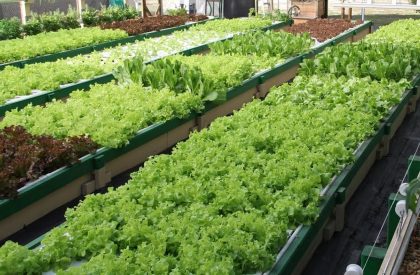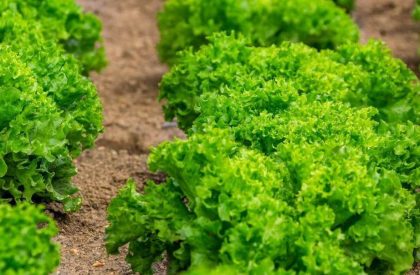Lettuces


The woody herb is often sweet, savoury, or peppery, and it smells amazing. Basil has been used how in almost every place within the world and has collected its own interesting history throughout the ages. (For a century or two, basil was thought to spawn scorpions.)
Basil belongs to the Labiatae (Lamiaceae), alongside rosemary, oregano, thyme, and a number of other other popular herbs.
Our favourite basil varieties are the classic sweet basil (Ocimumbasilicum), Genovese basil, Thai basil, and dwarf basil. Sweet basil may be a favourite among the Upstart Farmers.
Herbs are far more profitable than leafy greens, and may be an incredible crop line for market growers. The pricing you receive will vary counting on your market. for instance , Direct to Consumer markets sort of a CSA can often see prices as high as $2 or $3 an oz , while wholesale markets like restaurants may land within the $1 to $1.50 an oz range.
A recent price check at Target revealed that a 3/4 ounce clamshell package was retailing for $2.00, which comes bent $2.66 an oz at the purpose of sale. A general rule of thumb is that wholesale pricing are going to be 40% to 50% of retail price.
- Lettuce is rich in calcium, iron and vitamin A, and the nutrient value is high, because it is eaten uncooked.
- Producing lettuce hydroponically, in a controlled environment, produces a clean, uniform and superior quality crop throughout the year.
- Lettuce has a shallow root system, and lends itself to nutrient film production systems.
- In South Africa the gravel flow technique (GFT) is the most widely used system for its cultivation.
CLIMATIC REQUIREMENTS
- Lettuce is a cool-weather crop and, if grown under shade net and in tunnels, is not generally affected by winter cold and frost.
- The only exception is fully matured crisphead lettuce, which sometimes suffers frost damage if not harvested in time.
- If the heads start to decay, the plants must be removed as soon as possible to avoid spreading diseases to other plants.
- The optimum temperatures are 17°C to 27°C (daytime) and 3°C to 12°C (night).
- If the night temperature falls below 3°C, the growth rate will be retarded.
- If temperatures of 28°C and higher prevail, most of the cultivars will form small, inferior, loose heads, and bolt (form seed stalks).
- They will have a bitter taste.
- High temperatures can also cause a high incidence of tip burn, a physiological disorder.
Progressive banana varieties
In local languages, this banana is known as Bhusavali, Basrai, Marisas, Kabuli, Sindurani etc.
It is very popular in India.
Its plant is small, while the fruits are large.
Its pulp appears soft and sweet in food.
This variety is also known as Bambegreen and Harichal.
The areas of the Western Deep Group are famous mainly for its cultivation.
The banana plants can be 3 to 4 meters in height.
While their stem is medium thick and thick green.
Green fruits develop in them.
On an average, each bunch weighs between 25 and 30.
Fruits are yellow.
Customer Feedback
Talented Agronomist
Team Alexa made my Poly-House very well & also helped by assisting in organic Framing. Thanks & All the Best for the future.
Ms. Poonam Saxena, Indore (M.P.)
landownerExcellent job, excellent workmanship
Currently, Team Alexa helping me on Orchid Cultivation in Poly house. I’ve have to say till now everything is good and expecting the same for future.
Mr. Rajendra singh , Indore (M.P.)
landownerGreat ! Work
I would suggest Alexa Farms for Poly house Farming , Hi Tech Farming Organic Farming because there professionals have knowledge for all the crops.
Mahant Dharmendra Puri, Indore
landownerDone Wonderful job
Amazing design and installation of our new, beautiful yard. Gardener is professional, creative and knowledgeable designer.
Mark Angelino
NewyorkPlanting & Removal Charges
Within a your budget you can freshen up your plant with a few key upgrades that will increase your home’s curb appeal. A new gravel driveway or concrete walkway can make your home look like new. Small budgets are good for breaking up a larger project into manageable chunks, so you might splurge for a nice walkway this year and deal with the driveway later.

